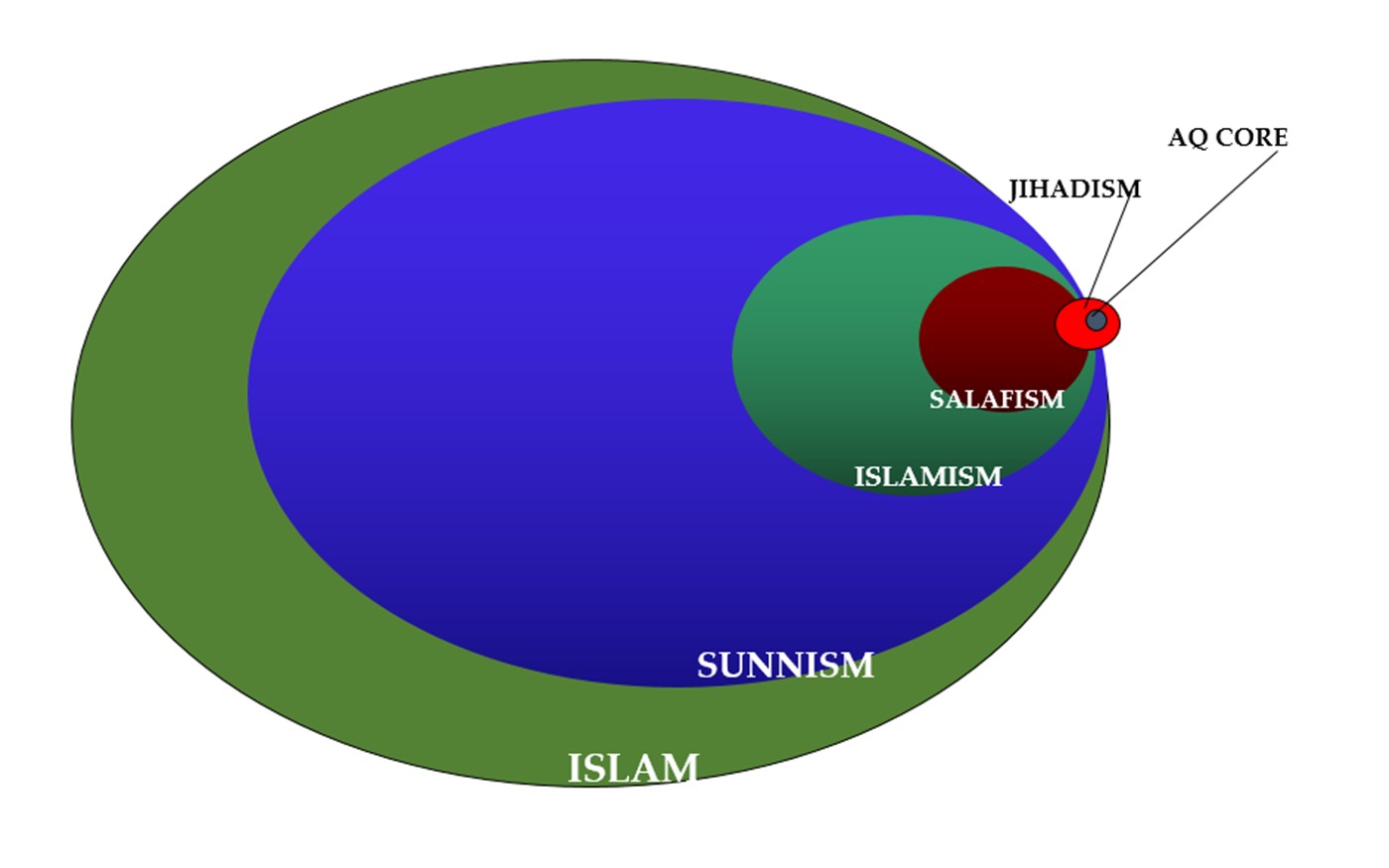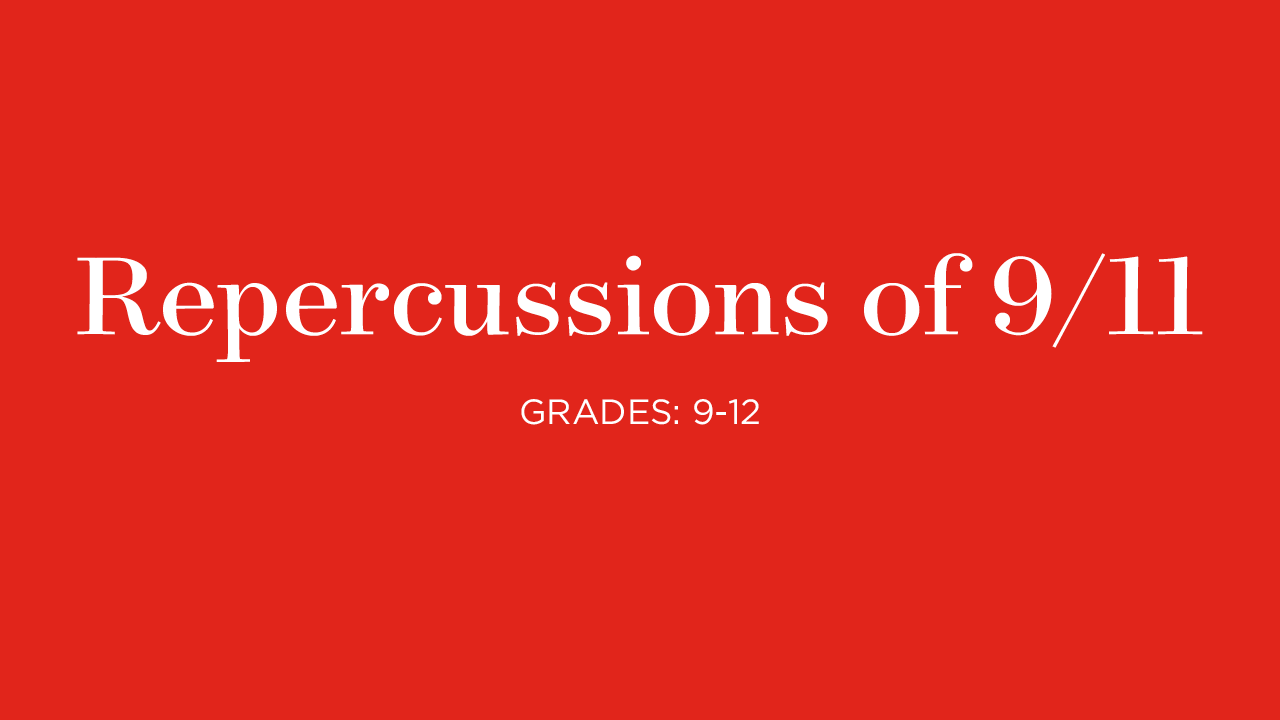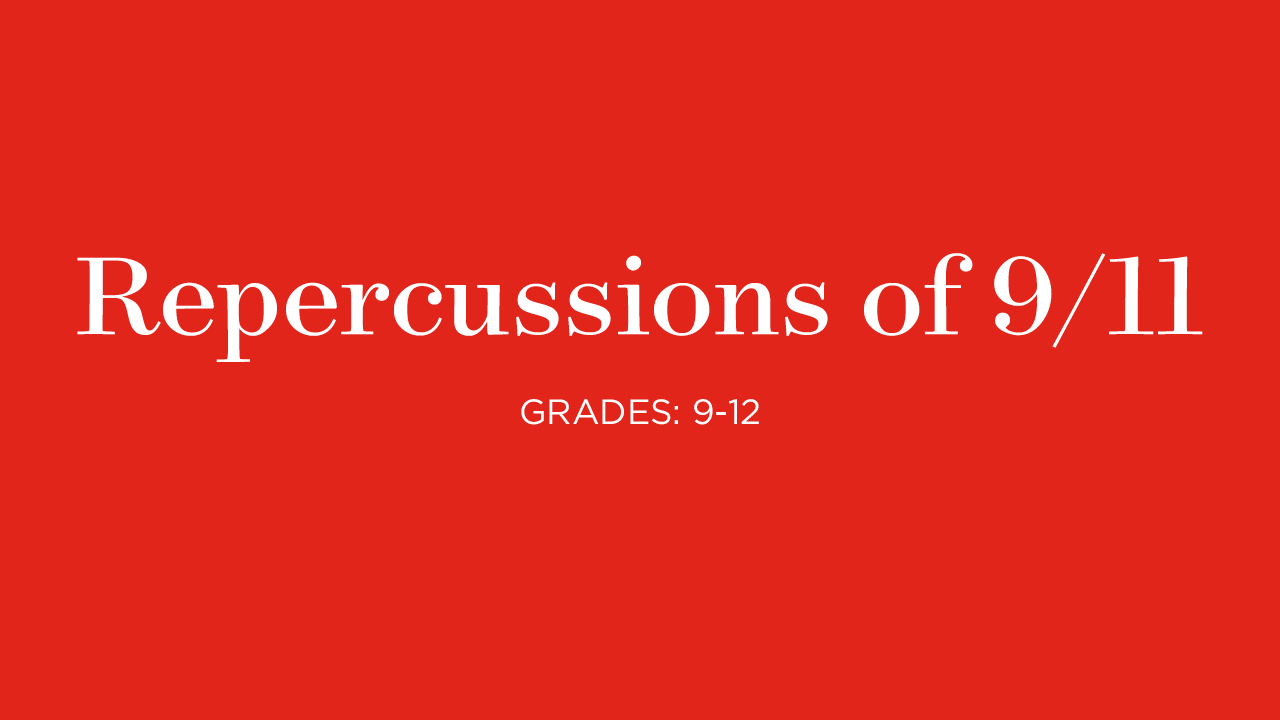Make a donation to the museum
Muslims in America after 9/11, Part III
Muslims in America after 9/11, Part III
- Grades 9 to 12
- Lesson Duration: One class period
- Theme: Repercussions of 9/11
Essential Question: How did attitudes toward Muslim-Americans—or those perceived to be Muslim—change after 9/11, and what were the consequences?
Learning Goals
Students will examine the concept of identity and stereotypes.
Students will investigate causes of the rise of anti-Muslim sentiment after 9/11.
Students will be introduced to multiple perspectives about Islam and terrorism, including voices from within the Muslim community.
Students will understand the difference between Islam and Islamist extremism.
Vocabulary
Islam: This is the world’s second-largest religion, founded by the Prophet Muhammad more than 1,400 years ago. Islam’s beliefs and practices center around two key sources: the Qur’an and the Hadith. An adherent of Islam is a Muslim.
Islamist extremism: “Islamists” see Islam as a guiding ideology for politics and the organization of society. They believe that strict adherence to religious law should be the sole basis for a country’s law, as well as its cultural and social life. While some Muslims believe this, many do not. Islamist extremists believe violence is acceptable to achieve these ends. Al-Qaeda is one of many Islamist extremist groups.
The Qur’an: A central religious text of the Islamic faith, the Qur’an contains what Muslims believe is God’s final revelation, made to the Prophet Muhammad, Islam’s founder, more than 1,400 years ago.
The Hadith: Another central religious text of Islam, the Hadith is a collection of Muhammad’s sayings and deeds during his life.
al-Qaeda: This international Islamist extremist terrorist network is responsible for the 9/11 attacks. Al-Qaeda is responsible for multiple terrorist attacks since its founding in the 1980s by Osama bin Laden and others who were involved in the war against the Soviet Union in Afghanistan. Their aim has been to overthrow governments in the Middle East, and elsewhere in the Muslim world, which do not strictly enforce a narrow, fundamentalist version of Islam.
Combating Terrorism Center at West Point: This center educates, advises, and conducts research to equip present and future leaders with the intellectual tools necessary to understand the challenges of terrorism and counterterrorism.
Terrorism: This is when people use violence for political ends.
Meaningful adjacencies: This term refers to the arrangement system of names on the 9/11 Memorial that reflect where the victims were on 9/11 and the relationships they shared with others killed in the attacks. The system allows relatives, friends, coworkers, and people who had just met but shared their last moments together to be listed side by side on the Memorial.
Activity
1. Review the concepts covered in the previous lesson including how perceptions of Muslim-Americans—or those perceive to be Muslim-Americans—changed after 9/11 and the consequences of those perceptions. Tell students they will explore how those perceptions continue to evolve and investigate the consequences.
2. Display or distribute copies of the graphic below from the Combating Terrorism Center at West Point. This can be done as a class or in small groups. Note: The small bright red circle denotes Islamist extremists. The black dot within the red circle denotes al-Qaeda. Ask students to look at the graphic and respond to the following questions:
- What do you notice when you first look at the chart?
- What do you think is the purpose of this chart?

3. Tell students that the terrorists who perpetrated the 9/11 attacks identified themselves as Muslims, but their interpretation of Islam was very specific and not representative of the way the majority of the world’s 1.6 billion Muslims interpret their faith. The graphic illustrates this point, that only a very small subset of Muslims are Islamist extremists. Ask students:
- If Islamist extremists comprise only a small fraction of Muslims, why do you think Islam is conflated with terrorism? Ask them to brainstorm their ideas and record them on a piece of paper, if working in small groups, or write class responses on chart paper.
- Play the clip below from the 9/11 Memorial & Museum’s public program “How to Be a Muslim,” featuring Haroon Moghul. Moghul is a fellow in Jewish-Muslim relations at the Shalom Hartman Institute, a frequent CNN contributor, and author of the memoir How to Be a Muslim: An American Story. In this clip, Moghul discusses his opinion on how Islam and terrorism came to be conflated after 9/11.
Video: Public Program: "How to Be a Muslim" Excerpt
4. After viewing the clip, ask students to respond to the following questions:
- According to Haroon Moghul, how did the actions of a small minority come to represent the entire religion of Islam?
- How did Islam and terrorism become conflated? (Possible answers might include conflating Saddam Hussein with al-Qaeda, western media portrayals, challenge of coming up with robust response to Islamist extremism from within the Muslim community.)
5. Compare Moghul’s responses to those identified by students prior to viewing the clip. Discuss any similarities or differences that exist between Moghul’s and student ideas and ask if they agree with Moghul using supporting evidence.
6. Ask students: How do we challenge false stereotypes and generalizations like the conflation of Islam and terrorism? Give the example of using specific language—like the vocabulary used in this activity—rather than oversimplified vocabulary when talking about individuals and groups of people.
7. If not offered as a response, tell students that individual people like Dahlia Mogahed and Haroon Moghul and their stories can be a way to challenge stereotypes. Display the 9/11 Memorial & Museum’s name finder tool. Type the name of 9/11 victim Shakila Yasmin into the search field and click her name in the results field. Note: If you do not have access to a smart board, you can print the results page and distribute it to the class. If students have laptops, this can be done in small groups.
8. Lead a brief guided-inquiry activity using the results page, continuing to ask this series of questions until all information is identified:
- What can you tell me about Shakila? What makes you say that?
- What else can you find?
9. Review all student responses that include her age, occupation, where she was born, where she lived in 2001, and her requested adjacency. In small groups, direct students to Inside the Collection and search the name Shakila Yasmin. Assign one artifact to each group and instruct them read the historical notes, the “Curators Comment” if one exists, and discuss their findings in groups. Note: If you do not have access to laptops, you can print the results page for each artifact.
10. After five minutes, ask students to report out the new information they learned about Shakila. During their research, they will discover the significance behind her meaningful adjacency.
11. After sharing information to paint a picture of Shakila, tell students that she was a practicing Muslim, one of several Muslim victims of 9/11. She was also an immigrant, born in Bangledesh, one of 2,977 victims from more than 90 nations.
12. Ask students, How do people like Shakila Yasmin help us to challenge stereotypes?
Summative Question: How did attitudes toward Muslim-Americans—or those perceived to be Muslim—change after 9/11 and what were the consequences? Note: This can be assigned as a writing assignment or completed as a class discussion.
Extension Question: Can you think of another turning point in history or in the present day when attitudes toward a particular group of people changed? What was the event? What were the consequences?
Muslims in America After 9/11, Part I

Essential Question: How did attitudes toward Muslim-Americans—or those perceived to be Muslim—change after 9/11? Grades: 9 to 12 Theme: Repercussions of 9/11
Muslims in America After 9/11, Part II

Essential Question: How did attitudes toward Muslim-Americans—or those perceived to be Muslim—change after 9/11, and what were the consequences? Grades: 9 to 12 Theme: Repercussions of 9/11